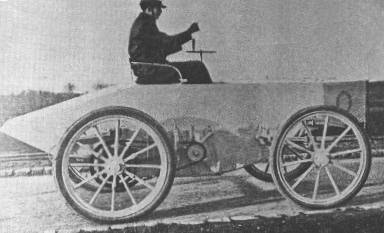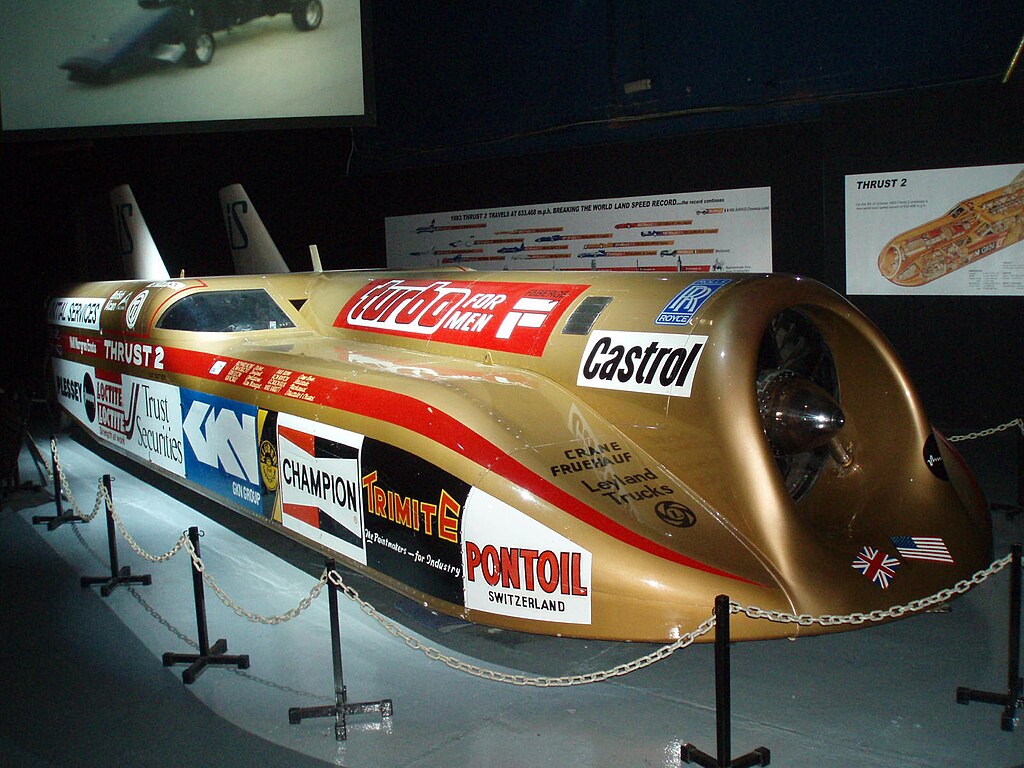The land speed record has been recorded since the 19th century, with Gaston de Chasseloup-Laubat setting a 39 mph record in a Jeantaud electric car in 1898.
Steam power and then internal combustion soon pushed the record beyond 70 mph, and in 1904 an American machinist named Henry drove a big engine with some wheels bolted on 90 mph over a frozen lake, bringing some publicity to his startup automobile business.
The record advanced swiftly, as internal combustion engines powered new speed records up to 403 mph by 1964. But a new age had begun. In 1963, Craig Breedlove had reached 407 mph, but the record was not recognized because the car had only three wheels and was powered by a jet engine. It soon became clear that this was the way of the future, and cars with engines driving the wheels never got much over 400 mph.
Turbojet daredevels traded the record back and forth at the Bonneville Salt Flats through the early 1960s, with Breedlove setting a lasting mark of 600 mph in 1965.
This stood until 1970, when Gary Gabelich survived a horizontal rocket launch that propelled his vehicle to 622 mph, over 1000 km/h. The Blue Flame had been reduced from its designed thrust of 100,000 N, equivalent to 58,000 horsepower, to about half power after Goodyear warned against taking the tires past 700 mph.
Breedlove began work on his own rocket car, which would have an ejection seat, Playboy livery, and a lunar lander rocket motor from TRW, but got sidetracked by a side job as a real estate agent.
Meanwhile, Richard Noble appeared with the Thrust project.
Thrust2, a Rolls-Royce jet engine on wheels, set a record of 633 mph in 1983. This was approaching the speed of sound, and Noble began working on Thrust SSC, a twin-engine supersonic car.
By 1997, his fighter pilot driver, Andy Green, was ready to attempt the record at Black Rock Desert. Breedlove was also back after crashing his rocket car the previous year. He was hoping for a 700 mph run, but was wary of approaching Mach 1. "I'd like to design an autopilot system and first make an unmanned run at the sound barrier," he said. "If the car made it, then we could try it with a dummy: me."
Breedlove reached 636 mph, but the British team set the record, with Green reaching 714 mph in September, and then the setting first supersonic record of 763 mph in October. Supercomputer modeling had been used to simulate the effects of a shock wave, visibile in an aerial photo of the run, bouncing off the ground.
Supercomputers have come a long way since 1997, and the Green/Noble team are now working on a car that can reach 1000 mph. This is probably faster than military fighter jets could manage in the thick atmosphere of low altitude.
Bloodhound SSC was scheduled to make a record attempt in South Africa during summer 2015, but the latest news points to a 2016 run.
I mean, I know you pretty much need rockets to pull this off now, but it kind of feels like cheating. I mean, philosophically speaking, if it doesn't have an ICE or an Electric engine, can it really be called a car? Though, if I go that route, does that mean I can't call Chrysler's Turbine Car a car?





